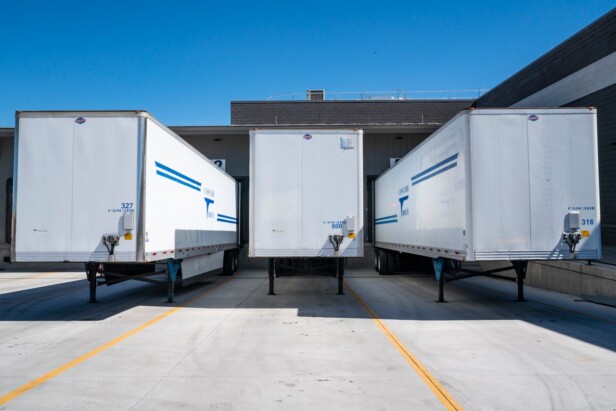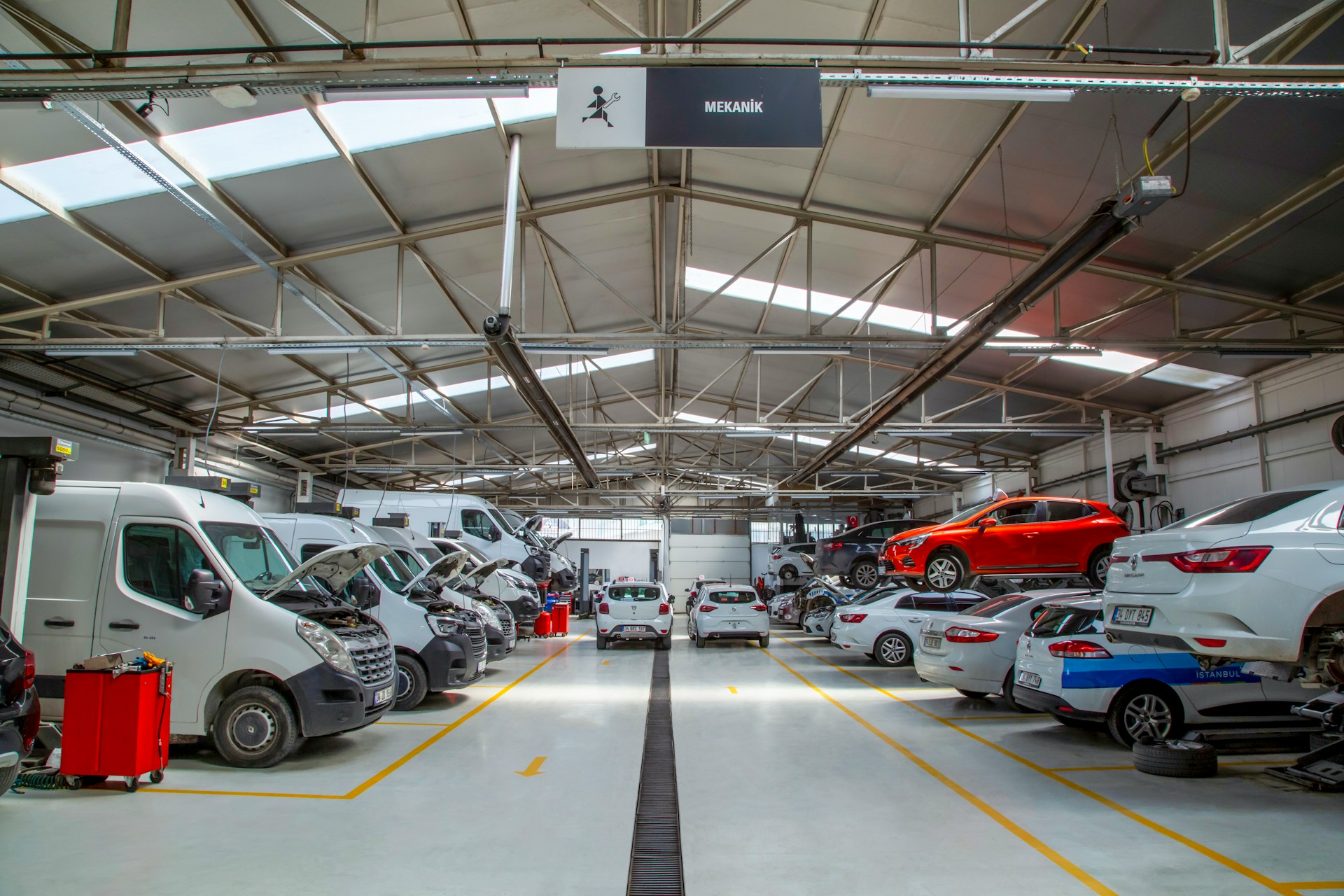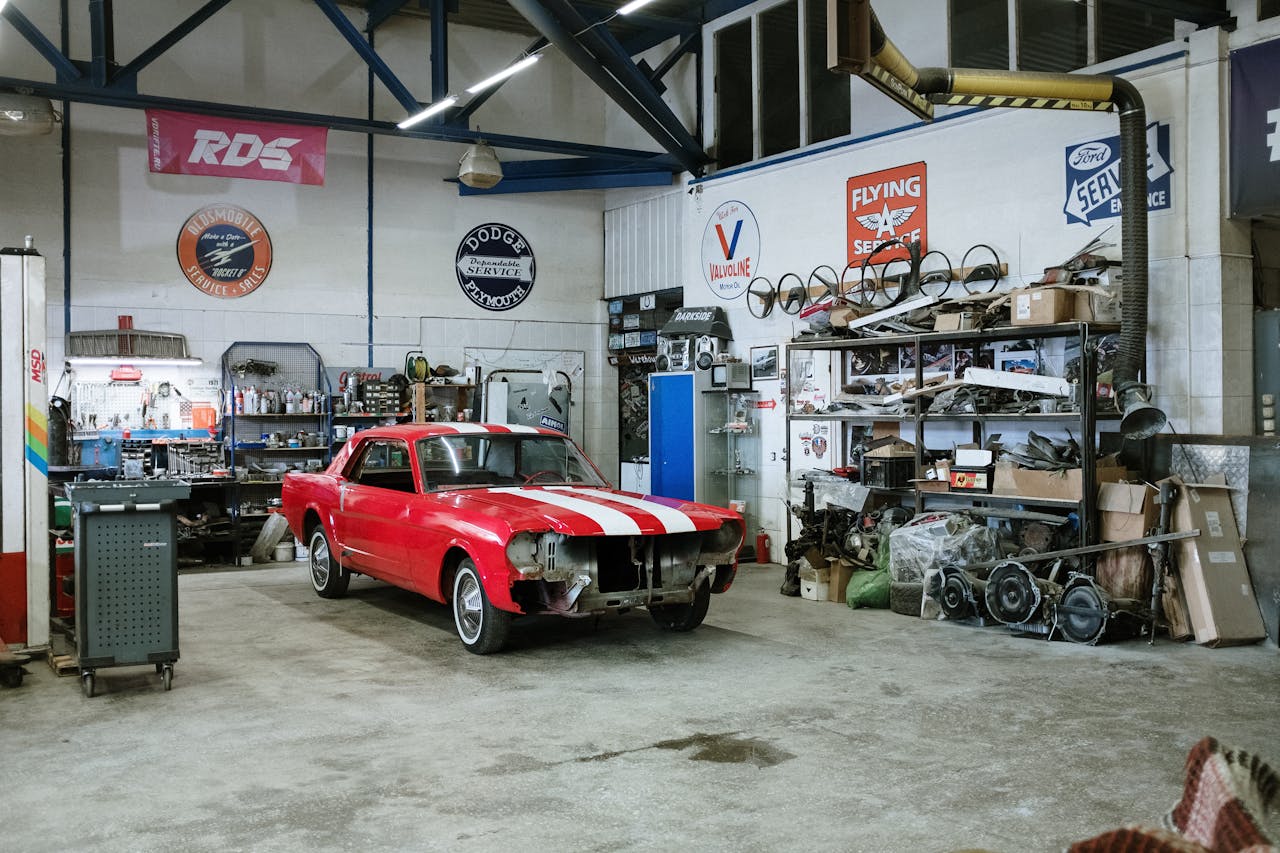Dallas truck terminal construction has evolved into large-scale, purpose-built facilities that span multiple acres and handle massive freight volumes. The Dallas suburb of Lancaster recently became home to an 8-acre autonomous trucking terminal featuring a 24,700-square-foot office and maintenance shop, along with extensive trailer parking areas.
These modern facilities integrate cross-docking capabilities, warehouse space, fueling stations, weighing scales, and dedicated inspection areas under solar panel canopies. We see this comprehensive approach becoming standard across the Dallas-Fort Worth corridor, where terminals serve as critical nodes connecting regional freight networks with major shipping routes like the Dallas-Houston corridor.
How Can Modular Construction Reduce Disruption And Speed Schedules?
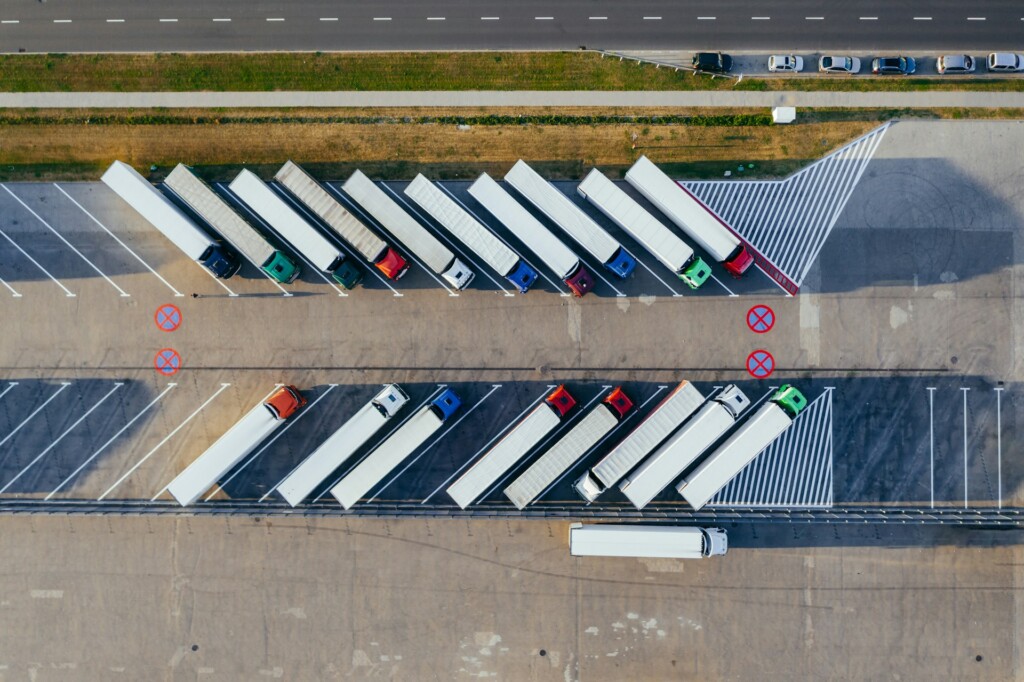
We approach modular construction by fabricating complete building modules offsite while sitework continues at the terminal location. This dual-site activity allows our crews to build mechanical, electrical, plumbing, and fire protection systems in controlled factory conditions while site preparation, utilities, and foundation work proceeds simultaneously at the project site.
Pre-installed systems arrive as complete modules with MEPFP connections already tested and verified. We coordinate the offsite fabrication schedule to align with foundation completion, ensuring modules can be positioned and connected immediately upon delivery. This approach reduces the time our crews spend working within active terminal operations.
Minimizing Terminal Operational Impacts
Active truck terminals operate around the clock, making traditional construction methods disruptive to freight movement and daily operations. We use offsite modules to reduce the construction footprint during critical installation phases. Large building sections arrive substantially complete, requiring only final connections and systems commissioning.
The modular approach concentrates most construction activity offsite, leaving only assembly and connection work at the terminal. This reduces gate closures, limits disruption to trailer parking areas, and minimizes interference with fueling operations and truck scales. Our crews can position modules during planned maintenance windows or lower-traffic periods.
Accelerating Project Delivery
Expedited timelines result from parallel construction activities occurring simultaneously at two locations. While our fabrication teams complete building modules with pre-installed systems, site teams prepare foundations, underground utilities, and access roads. This overlap typically reduces overall project schedules by 30 to 50 percent compared to traditional construction methods.
We coordinate module delivery to match foundation readiness, allowing immediate installation once modules arrive onsite. The controlled factory environment eliminates weather delays for the majority of construction work, while quality control inspections occur before transport. This front-loaded approach reduces the risk of schedule delays during the final installation phase.
How Are Autonomy And Gate Automation Shaping Terminal Design?
Autonomous trucking capabilities drive fundamental changes in how we plan terminal layouts and infrastructure systems. Dallas-area facilities demonstrate the integration of high-speed data offload infrastructure, specialized inspection zones, and comprehensive maintenance operations designed to support driverless vehicle fleets. These terminals require robust IT networks, dedicated staging areas for pre-trip and post-trip inspections, and maintenance bays equipped with advanced diagnostic equipment.
High-Speed Data Systems And Connectivity Requirements
Autonomous trucks generate massive amounts of operational data that terminals must capture, process, and transmit efficiently. High-speed data offload systems allow these vehicles to transfer route information, vehicle diagnostics, and cargo documentation within seconds of arrival. We design network infrastructure with redundant fiber connections and edge computing capabilities to handle real-time data processing without delays.
Terminal layouts incorporate dedicated data zones where autonomous vehicles can park while uploading trip data and downloading new route instructions. These areas require robust power distribution systems and weather-protected communication equipment. The positioning of these zones affects overall site circulation patterns and influences the placement of maintenance facilities and driver amenities.
Computer Vision And AI Integration In Operations
Computer vision systems transform how terminals manage vehicle identification, cargo inspection, and security monitoring. These AI-powered cameras automatically read license plates, container numbers, and trailer identification without requiring manual input from gate staff. The technology enables continuous monitoring of yard activities and can detect unauthorized access or equipment malfunctions in real time.
We integrate computer vision infrastructure throughout terminal design, positioning cameras at strategic locations for comprehensive coverage. Lighting systems must provide consistent illumination for accurate image capture during all weather conditions and times of day. The physical layout accounts for camera sight lines and includes provisions for equipment mounting and maintenance access.
Voice Agents And Automated Gate Operations
Voice agent technology streamlines check-in procedures by allowing drivers to communicate with terminal systems using natural language commands. These systems can verify appointments, provide yard directions, and update delivery status without human intervention. The technology reduces processing times and improves throughput by eliminating traditional paperwork exchanges at gate facilities.
Terminal design incorporates dedicated lanes equipped with voice communication systems and automated barrier controls. We position these facilities to minimize traffic backup while providing adequate space for vehicle staging during the check-in process. The integration requires careful coordination between IT infrastructure, traffic control systems, and physical gate structures.
Enhanced Security And Yard Visibility Systems
Security monitoring systems leverage AI analytics to track vehicle movements, monitor cargo handling, and detect unusual activities across the terminal. These systems provide 24/7 surveillance capabilities and can automatically alert security personnel to potential issues. The technology enables better asset protection and helps maintain operational continuity by identifying problems before they disrupt terminal operations.
We design comprehensive camera networks that provide complete yard visibility while respecting driver privacy and operational requirements. Security infrastructure includes central monitoring stations, emergency communication systems, and controlled access points. The layout must balance security effectiveness with operational efficiency and regulatory compliance requirements.
Where Is Terminal Growth Concentrated Around Dallas, And What Connections Matter?

Dallas-area terminal growth spans multiple corridors across the metro region. Lancaster anchors autonomous trucking operations as a key Texas operations base, positioning itself at the forefront of driverless freight technology development.
Terminal sites cluster along major freight corridors throughout the Dallas-Fort Worth metroplex. CF Hawn Highway hosts significant terminal development, including an 11,807 location that serves as part of the regional network. Fulghum Road in Hutchins provides another concentrated terminal hub at 1511 Fulghum Road. N Walton Walker Boulevard features substantial terminal infrastructure, including a 27-acre former FedEx facility with 154-door cross-docking capabilities and 800 demarcated parking spaces.
Fort Worth extends the regional footprint with facilities like the Crowley Road location, creating a distributed network that covers the entire Dallas-Fort Worth region. This geographic spread allows terminals to serve different freight patterns and customer bases across the metro area.
Rail Terminals Drive Intermodal Connectivity
Major rail terminals throughout the Dallas-Fort Worth region provide critical intermodal connections for terminal operations. The Union Pacific Dallas Intermodal Terminal spans 360 acres in southern Dallas County, offering direct access to the ports of Los Angeles and Long Beach. BNSF operates extensive intermodal facilities throughout North Texas, leveraging Fort Worth as a major hub system.
Additional rail infrastructure includes the Kansas City Southern Wylie Rail Yard, Kansas City Southern Garland Rail Yard, and Union Pacific Miller Intermodal Facility. These rail terminals create multiple connection points for truck terminals to interface with long-haul freight movements.
Dallas-Houston Corridor Shapes Regional Demand
Freight activity along the Dallas-Houston corridor drives significant terminal demand and influences operational planning. This route represents one of the most active freight corridors in Texas, connecting two major economic centers and their surrounding industrial regions.
Terminal operators position facilities to capitalize on freight flows between these markets. The corridor supports both regional distribution and longer-haul movements, requiring terminals that can handle diverse freight patterns and equipment types. We coordinate terminal layouts to accommodate the specific truck configurations and trailer types that serve this high-volume route.
Conclusion And Next Steps
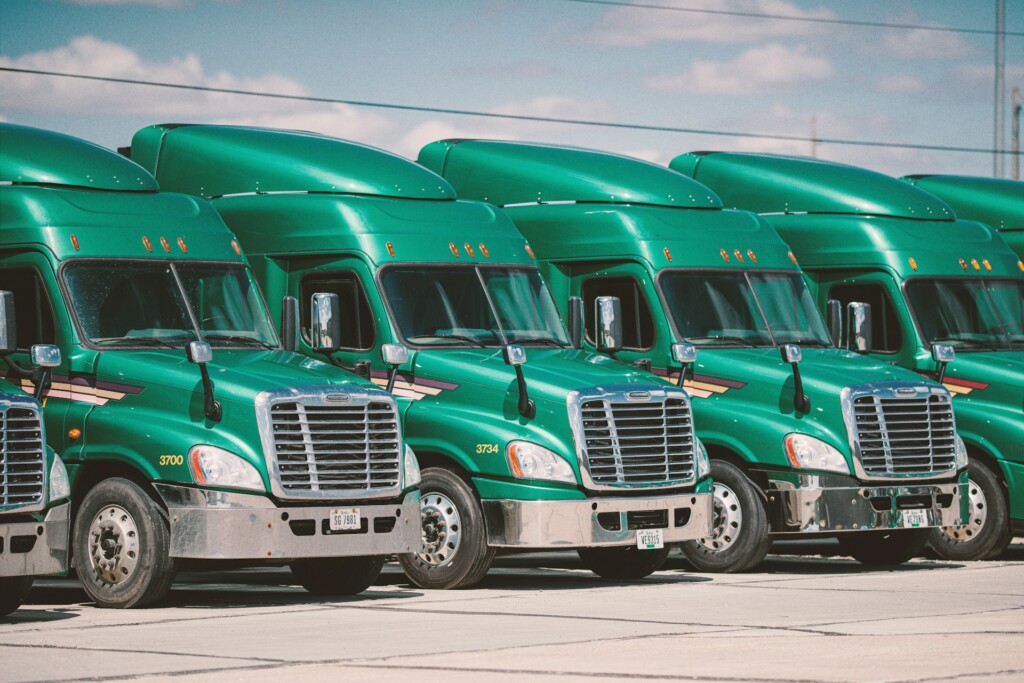
Dallas truck terminal construction centers on large sites with robust trailer parking, cross-docking capabilities, fueling stations, truck scales, and inspection areas. The program requirements include substantial office and maintenance space to support daily operations across sprawling facilities. We coordinate these complex projects knowing that modular construction reduces on-site disruption while maintaining operational readiness throughout the build process.
Looking ahead, define your program requirements based on the core components outlined here. Assess whether offsite modular construction can minimize disruption to active terminal operations during your project. Plan for high-speed data infrastructure, inspection zones, and automated gate workflows that align with Dallas-area freight demands and prepare your facility for autonomous trucking integration. Site planning must account for both current operational needs and future technological capabilities.
Ready to develop a truck terminal construction plan tailored to Dallas market demands? Contact EB3 Construction to discuss your project requirements.

